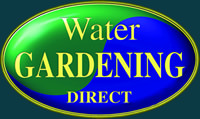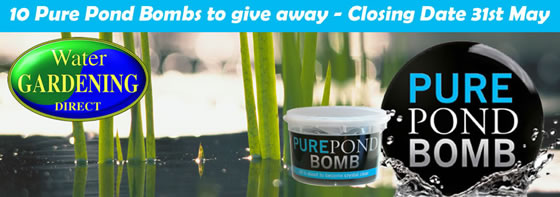
Solar Powered Products
With the sun out at last, our sales for solar products have shot up, but how useful is Solar Power and what can it be used for?
As much as we would all love the quantity of sunshine they get from Spain or L.A. we don’t get it and this impacts hugely on the performance of solar powered products. However, in the right conditions solar power can make life much easier. As we have suggested, solar pumps need sunlight to work and the stronger the light the better. If the sunlight is not consistent then neither are solar powered pumps and as such they can not be used as the only source for fish pond filtration or oxygenation. However, they can be ideal for solar powered water features, moving water in wildlife ponds, or enhancing a fish pond which already has mains powered equipment. The beauty of solar pumps is that they do not need mains power which makes them very portable, easy to install and they cost nothing to run.
Solar Powered Water Features
If you want to install a water feature but do not want the hassle of mains cabling or mains power going in to the water, then solar may be the solution. There are many different designs which may fit, but we also offer pumps by themselves which allow you to create your own features. Solar pumps have their limitations when it comes to lifting water through hoses. Ask them to push water through a hose much more than a foot high and the results are much less impressive. If in doubt feel free to contact us. The links below will take you to the pages in our website if you would like to see the choices available.
Click Here to go to our Solar Water Features Page
Click Here to go to our Solar Fountain Pumps Page
Using Solar Power in Wildlife Ponds
Most wildlife ponds are natural ponds with no moving water and hence no mains power. The still water is ideal for some desirable creatures, Newts in particular, but also non desirable creatures such as Mosquito’s. If the balance isn’t right then they can stagnate and smell. Using a solar pump in these environments couldn’t be easier and can solve some of the problems. The Smart Solar range of pumps are supplied with floats meaning the pump is suspended a few inches below water surface. This means that it does not disturb the sediment and wildlife at the bottom of the pond but can still give you a small fountain spray which creates movement, adds oxygen and discourages Mosquito larvae. Alternatively, the Smart Solar Air Pump can also add additional oxygen and water movement during sunlight hours.
Click Here to go to our Solar Air Pump Page
Using Solar Power in Existing Ponds
Solar pumps and oxygenators do not require any mains connections making them ideal if you want to add a little fountain or movement to your existing pond. As previously mentioned all the Smart Solar pumps are supplied with floats making installation incredibly simple.
Using Solar Powered Lighting at Night
Why limit solar power to just pumping water, with the use of a built-in battery which can be charge by a solar panel, underwater light sets can illuminate the night time world of your pond.
Click Here to see the Smart Solar Underwater Light Set
Click Here to see the Lotus Underwater Solar Light Set





